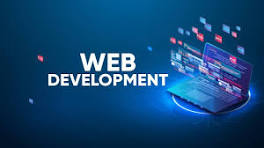
Web Development
Basic Concepts: Start by learning the basics of web development, including HTML, CSS, and JavaScript. Front-End Development: Learn front-end development technologies and frameworks (e.g., Bootstrap, React, Angular) to create interactive user interfaces.
Web Development Course Content
Module 1: Introduction to Web Development
Skills: None required
Topics:
What is web development?
Overview of front-end and back-end development
Setting up a development environment
Module 2: HTML (Hypertext Markup Language)
Skills: Basic text editing
Topics:
Structure of an HTML document
HTML elements and tags
Creating links and images
Semantic HTML
Module 3: CSS (Cascading Style Sheets)
Skills: Basic understanding of design principles
Topics:
Introduction to CSS
Styling text and backgrounds
CSS box model
CSS layout techniques
Module 4: JavaScript
Skills: Basic programming concepts
Topics:
Introduction to JavaScript
Variables and data types
Functions and scope
DOM manipulation
Module 5: Responsive Web Design
Skills: CSS and HTML knowledge
Topics:
Introduction to responsive design
Media queries
Flexbox and Grid layout
Building responsive websites
Module 6: Version Control with Git
Skills: None required
Topics:
Introduction to version control
Setting up Git
Basic Git commands
Working with branches and repositories
Module 7: Front-End Frameworks (e.g., Bootstrap, Foundation)
Skills: HTML and CSS knowledge
Topics:
Introduction to front-end frameworks
Using Bootstrap or Foundation for rapid development
Customizing and extending frameworks
Module 8: Back-End Development Basics
Skills: Basic programming concepts
Topics:
Introduction to back-end development
Server-side vs. client-side programming
Overview of server-side languages (e.g., Node.js, Python, Ruby)
Module 9: Introduction to Database Management
Skills: Basic understanding of data structures
Topics:
What is a database?
Introduction to SQL
Relational database management systems (e.g., MySQL, PostgreSQL)
Module 10: Server-Side Development
Skills: Server-side language knowledge (e.g., Node.js, Python, Ruby)
Topics:
Creating server-side applications
Handling HTTP requests and responses
Working with databases
Module 11: Web APIs and RESTful Services
Skills: Server-side development knowledge
Topics:
What is a web API?
RESTful principles
Creating and consuming web APIs
Module 12: Authentication and Authorization
Skills: Server-side development knowledge
Topics:
Authentication vs. authorization
Implementing user authentication
Securing web applications
Module 13: Deployment and Hosting
Skills: Basic understanding of server management
Topics:
Deploying web applications
Hosting options (e.g., shared hosting, VPS, cloud hosting)
Domain management and DNS
Module 14: Web Development Best Practices
Skills: Familiarity with web development concepts
Topics:
Performance optimization
Accessibility
SEO (Search Engine Optimization)
Cross-browser compatibility
Module 15: Real-World Projects
Skills: All previous modules
Topics:
Working on real-world web development projects
Applying best practices and concepts learned
Building a portfolio of web projects
Web Development Learning Roadmap
Basic Concepts: Start by learning the basics of web development, including HTML, CSS, and JavaScript.
Front-End Development: Learn front-end development technologies and frameworks (e.g., Bootstrap, React, Angular) to create interactive user interfaces.
Back-End Development: Learn server-side programming languages (e.g., Node.js, Python, Ruby) and databases (e.g., MySQL, PostgreSQL) for building dynamic web applications.
Full-Stack Development: Combine front-end and back-end development skills to become a full-stack developer.
Version Control: Learn Git for managing and tracking changes to your codebase.
Responsive Design: Learn how to create responsive web designs that work across different devices and screen sizes.
Web APIs: Understand how to create and consume web APIs for integrating with external services.
Authentication and Authorization: Learn how to implement user authentication and authorization in web applications.
Deployment and Hosting: Learn how to deploy and host web applications on various platforms.
Web Development Best Practices: Familiarize yourself with best practices for web development, including performance optimization, accessibility, and SEO.
Real-World Projects: Work on real-world projects to apply your skills and build a portfolio.
This roadmap and course content will help you build a strong foundation in web development and prepare you for a career as a web developer.
Enroll For Course Now